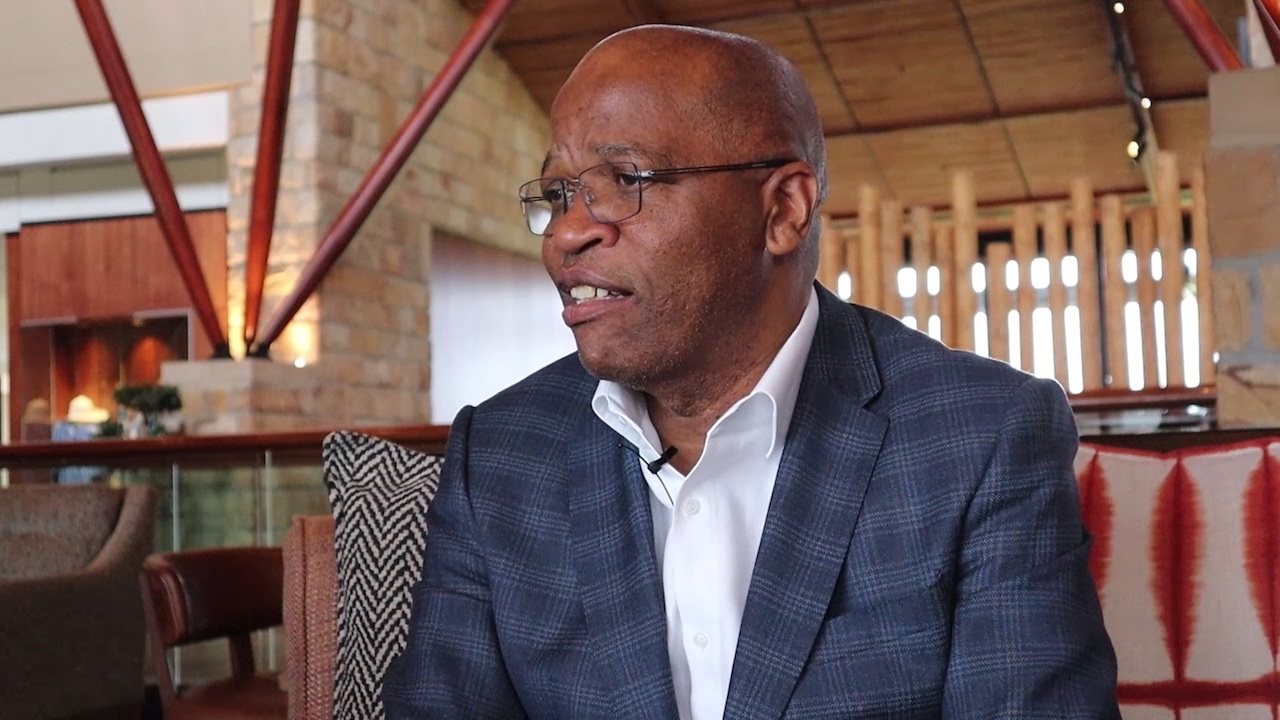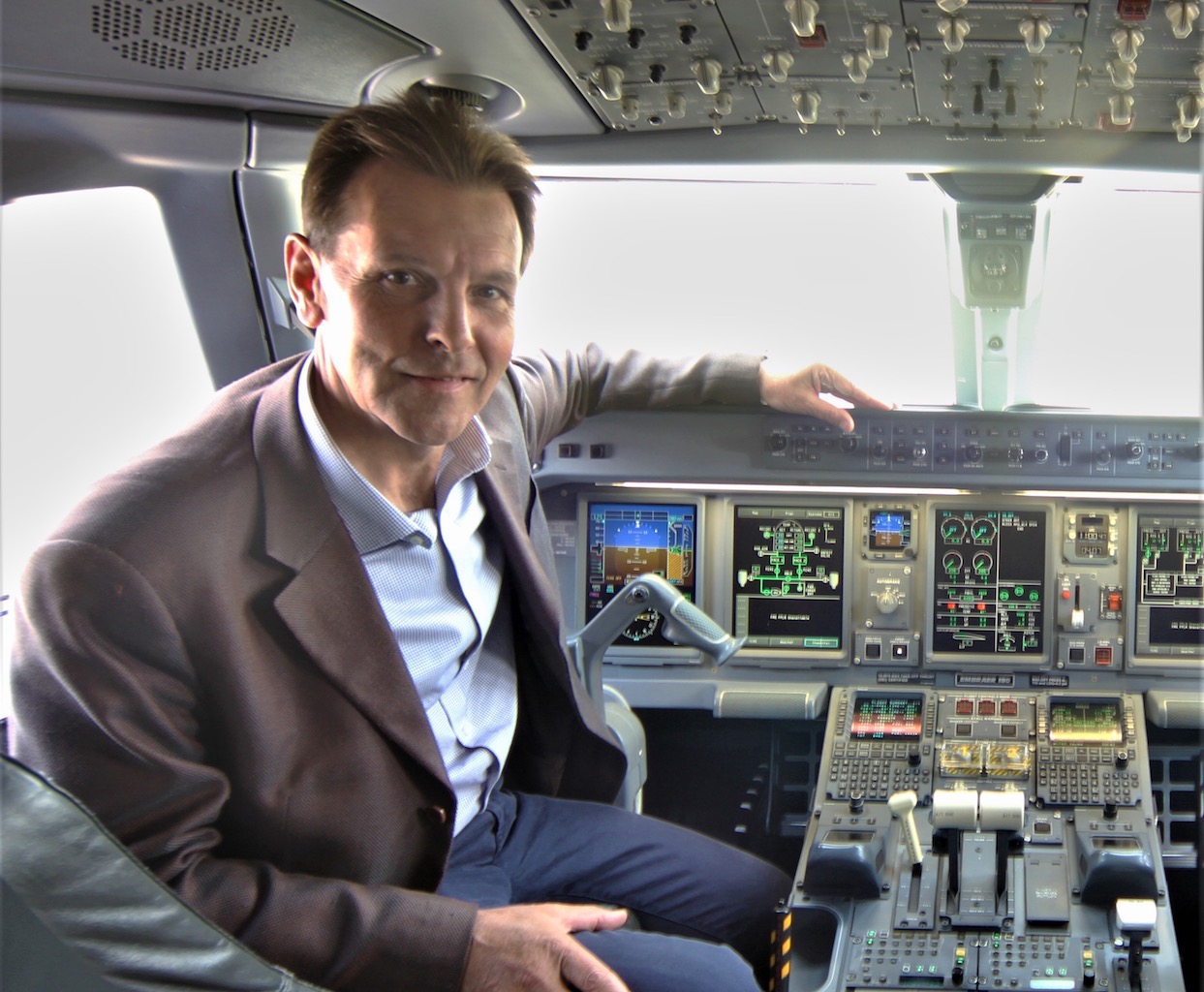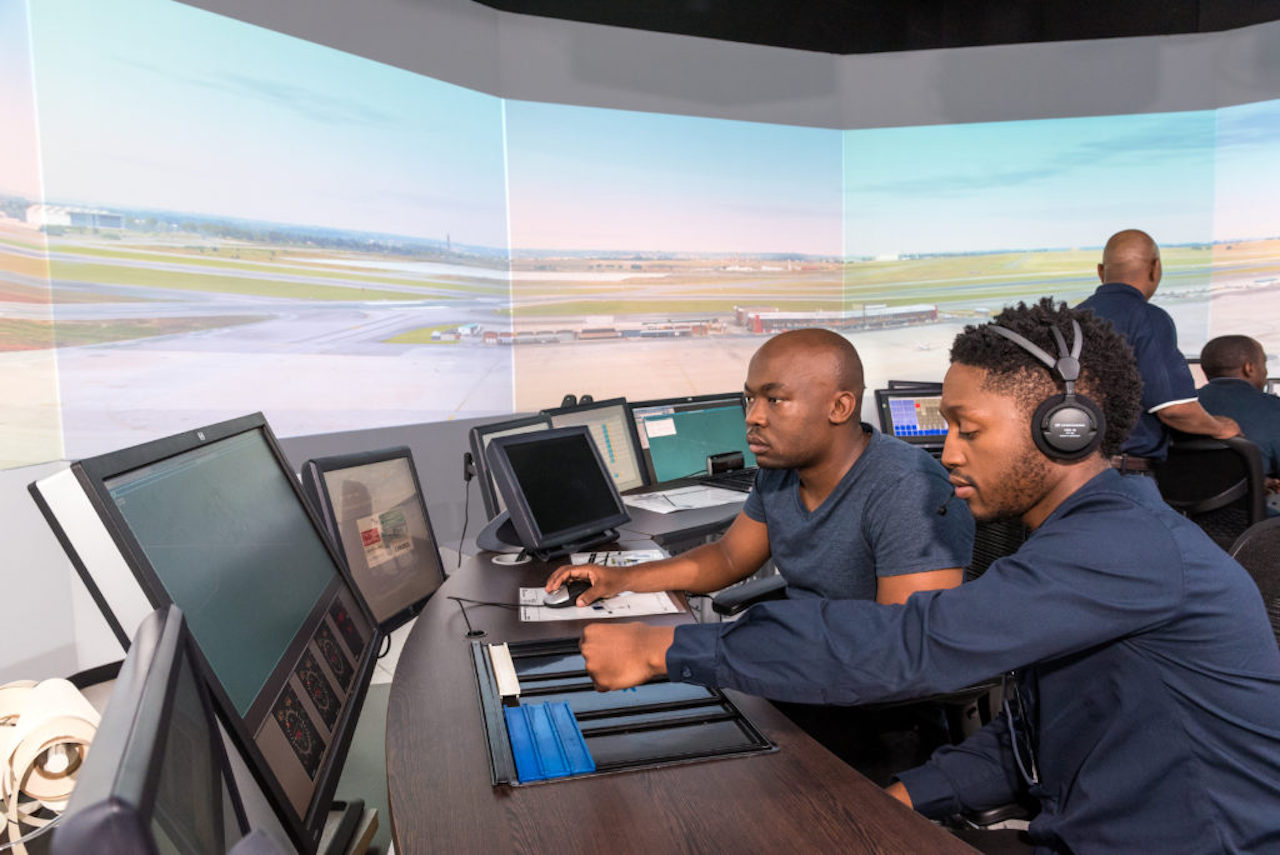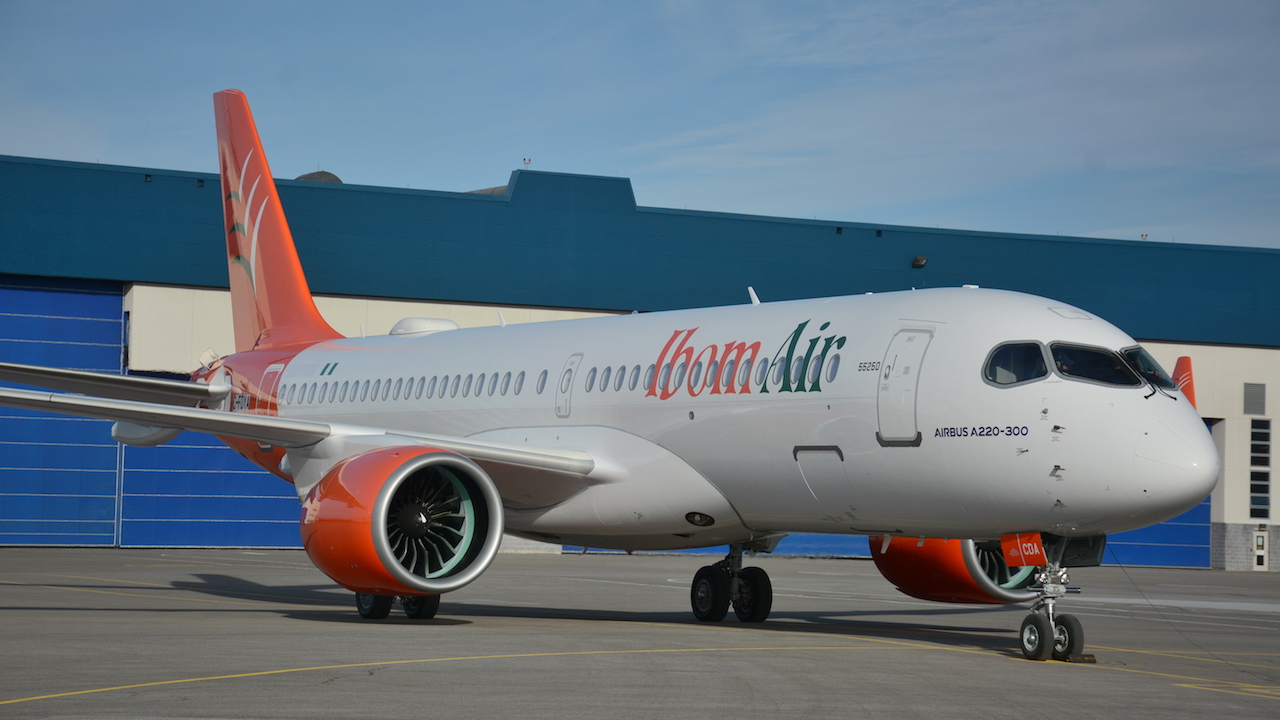SA's air pressure...
South African airlines and the country’s air traffic service have been making headlines, but not always for the right reasons.

John Lamola: "SAA airline is operating sustainably - even if it is short of capital" IMAGE: SAA
Since South African Airways (SAA) emerged from business rescue and resumed operations in September 2021, an ongoing constraint to SAA’s recovery has been access to capital. In the short term the airline has been in the news over the contentious appointment of Professor John Lamola and the new CEO.
Lamola was initially appointed as executive chairman in 2021 and then interim SAA Group CEO in May 2022. The search for a permanent CEO produced a short list of three candidates: Allan Kilavuka, the CEO of Kenya Airways, Philip Saunders, who was SAA’s chief commercial officer in 2019 and acting CEO in 2020, and Lamola, as the current incumbent.
The SAA board recommended Kilavuka – however government minister Barbara Creecy overruled the board and appointed Lamola; presumably because he is a South African and not a white male, the reasons the other two candidates were ruled out.
Opposition political parties have strongly objected to the Government overruling the SAA Board as it creates a precedent for future government intervention in the airline – and thus a return to the bad old days of SAA being used as a tool of government policy.
The ongoing constraint of the shortage of capital was to be addressed through the sale of a majority shareholding to a strategic equity partner: the Takatso Consortium. However that deal was cancelled in 2024.
In the 2022/23 financial year, SAA reported a net profit of R252 million (US$13.8m).
Lamola said: “This marks a significant milestone for the airline, demonstrating its ability to sustain profitability in a highly-competitive and capital-intensive sector.”
A critical driver of SAA’s financial stability is its balance sheet, which is free from legacy debt, and a commitment to avoiding government bailouts. Lamola said: “We have a five-year plan that ensures SAA will survive on its own operational revenues for at least the next three years.”
Currently, SAA operates a fleet of 20 aircraft, predominantly narrowbody Airbus A320s on a regional and domestic network. Due to a shortage of widebody aircraft, long-haul operations remain limited to Sao Paulo and Perth.
Lamola said: “The airline’s restructuring and future expansion plans align with South Africa’s broader economic growth objectives, including increased connectivity, tourism, and trade facilitation.”
“We are looking forward to the completion of the external audit of the business performance for financial year ended March 2024. That should give assurance that SAA is on a sustainable recovery path. As SAA charts its course for the future, its commitment to profitability, strategic expansion, and industry leadership affirms its role as a flagship carrier,” Lamola said.
--------------------------------
Rodger Foster Retires
Rodger Foster, the founder of South African regional airline Airlink, announced his retirement from a stellar career of almost 33 years running the airline he created.
Foster attributes Airlink’s survival to three factors: Maintaining a strong balance sheet, forging lucrative airline partnerships, and supporting staff to improve morale.
Foster is particularly proud of Airlink’s investment in its balance sheet. He said the airline has been “very conservative when it comes to managing money, ensuring debt is paid back, debt covenants are not breached and having enough working capital for emergency scenarios.
“We also took a conservative approach to expanding our route network when others had been more aggressive on growth, which later came to stretch them past breaking point.”
The biggest test of Airlink’s resilience was the COVID-19 pandemic, when its strong balance sheet enabled it to retain all its staff throughout the crisis. “This is testimony to our attitude to staff in terms of looking after their best interests and also up-skilling them,” Foster said.
In 1997, Airlink entered a franchise with SAA which worked well for 23 years. However, in December 2019, SAA entered business rescue and failed to transfer to Airlink R890 million (US$48.75m) of revenue for flown tickets. This prompted Airlink to terminate the franchise in early 2020. Foster said: “it was a blessing in disguise as the termination of the franchise meant that we were now free to do what we want, and to grow the business”.
In asserting its independence, Airlink was rebranded, and over the past five years has cultivated more than 40 commercial airline partnerships, including 10 code shares, with carriers from all three of the global airline alliances.
In August 2024, Qatar Airways acquired a 25 per cent share in Airlink, which injected further capital into the airline.
Foster’s shoes will be hard to fill. The airline’s chief financial officer, de Villiers Engelbrecht, takes over as CEO from 1 April 2025.

-----------------------------------
FlySafair
FlySafair was beset by a legion of troubles over the peak festive season.
Its greatest threat was two adverse rulings by South Africa’s International and Domestic Air Services Licencing Councils. These councils found that the airline did not comply with South Africa’s 25-per cent limit on foreign ownership.
Airlink and Global Aviation, (which operates Lift Airline), lodged complaints regarding FlySafair’s shareholding. In December, the councils found that FlySafair is 74.86 per cent owned by ASL Aviation Group, an Irish holding company.
FlySafair first faced a challenge to its offshore shareholding when it was launched in 2024 and the airline changed its ownership to comply. Then, in 2019, it was discovered that FlySafair’s parent company ASL had claimed in its annual report that it was once again a 75 per cent shareholder of the airline.
There was widespread speculation that the licencing councils may ground the airline. FlySafair initially argued that it considered itself to be compliant due to the trustees of the Safair Investment Trust being South African.
The airline also argued that the law was vague and it therefore needed a ruling as to what structure would be acceptable. The issue was provisionally resolved in January when the licencing councils gave FlySafair twelve months to become compliant.
Also in December, the airline faced a public relations disaster when it admitted to regularly overbooking flights. Competitor airlines were quick to claim that they did not do ‘deliberate overbooking’.
Then newspaper headlines splashed claims of a very dear disaster at Durban that was covered up by the airline and glossed over by the SACAA. And if that was not enough, a self-proclaimed social media influencer started a drunken brawl with cabin crew. The passenger videos went viral, but it must have been some consolation that this time public opinion supported the airline.
-----------------------------

ATNS: Staff and Skills Crisis
A South African Transport Department report has found that the state-owned Air Traffic and Navigation Services (ATNS) faces critical staff shortages.
The report noted that the staff shortages required air traffic control sectors to be combined. Further, it has neglected to maintain flight procedures, of which 326 have been withdrawn by the SACAA.
There is a worldwide shortage of experienced air traffic controllers and partly due to its specific racial diversity hiring requirements, ATNS has suffered a high skills loss. As a state-owned enterprise, ATNS is expected to transform its employee racial mix.
“We are on the right track to meet the national development plan objectives as an aviation industry player,” ATNS CEO Ms. Nozipho Mdawe said.
From an analysis of ATNS annual reports, the headcount of air traffic controllers declined a third, from more than 900 in 2012 to 646 in 2023. Yet during this period air travel increased by 13.2 per cent, according to IATA.
Due to the withdrawal of the 326 navigation procedures, transport minister Barbara Creecy tasked the ATNS Board to accelerate the recruitment of air traffic controllers, flight procedure designers, technical support staff, engineers and training instructors.
The minister has given ATNS “18 months to three years” to fully implement the recommendations related to staffing problems.
This “18 months to three years” is criticised as being too long, as ATNS has failed to honour past promises.
Aaron Munetsi, the CEO of the Airlines Association of Southern Africa, said: “ATNS failed to deliver on its assurances that the procedures would be reinstated by the summer peak travel season.”
Stay up to date
Subscribe to the free Times Aerospace newsletter and receive the latest content every week. We'll never share your email address.


